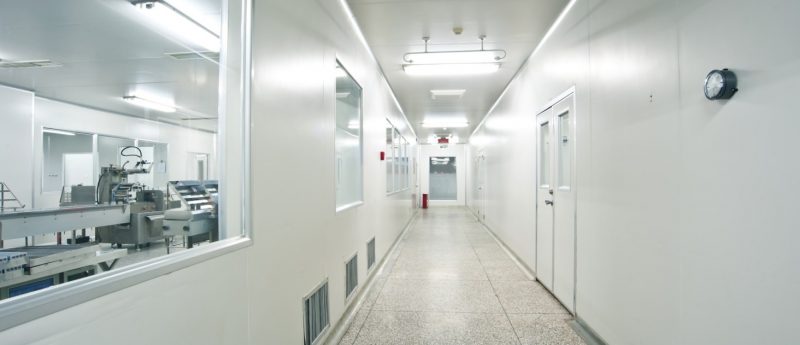Standardizing the cold chain: an interview with David Lewandowski, Brooks Life Sciences

In this interview from Cell and Gene Therapy World (22-25 January, FL, USA), David Lewandowski discusses the importance of the cold chain in cell therapy development.
Please introduce yourself and Brooks Life Sciences
My name is David Lewandowski, Global Product Manager at Brooks Life Sciences (USA), and I am fortunate to work with leading scientists in cell therapy and regenerative medicine. Having been in this space since its infancy, I have been able to watch the evolution of this space and see how companies like Brooks have contributed to its maturation, by providing automated and innovative sample management solutions.
Initially, the industry predominantly focused on bioprocessing and high level logistics-related issues but recently we have seen an explosion in sample management interest. As demonstrated by topics covered at scientific meetings such as Phacilitate, there has been an increase in cold-chain issues with a focus on time and temperature data requirements for maximum therapeutic quality and disaster planning.
2017 saw a rise in cell therapy approvals; have you noticed any changes?
The field is moving so rapidly; two CAR-T cell therapies were FDA-approved last year and now, with 946 Phase I—III clinical trials underway, a big challenge remains with standardization, or lack thereof. With cell therapy, we are witnessing what some have described as the 4th pillar of medicine. As with all sciences, there is a desire to standardize and build reproducible models, but this is challenging when developing cell-based therapies that have so many variables to consider.
With allogeneic therapies, we are challenged to develop processes which include large-scale controlled rate freezing, storage and logistics. Questions such as “what is the quality of bioprocessing bags?” or “are the advantages of closed-loop manufacturing absolute?” need to be addressed. The answer to these questions will be dependent on the volume of cells that the patient needs and that varies with each patient.
How important is sample management?
There are three primary sample groups; research grade materials, clinical trial samples and actual therapies. Each has a different level of scrutiny and rigor that needs to be applied. In biobanking, the goal is to remove pre-analytical variables and other post processing variables that can impact the sample. Teams are relying on highly trained staff or automated solutions where possible. Even with highly trained technicians at different facilities who might be trained to the same level, the reality is that there are always variables. Automation is the one way to overcome this, otherwise much expense can be wasted continually training staff. Brooks automated services and products can help with this.
How has ISBER been supporting cell therapy development?
As President-elect of International Society for Biological and Environmental Repositories (ISBER), I can report that in the last six months the Society has been engaged with more cell therapy groups than ever. The groups are seeking input from ISBER best practices about facility design, disaster planning, storage, monitoring and annotation. ISBER is focused on research specimens and ISBER’s expertise in these areas are extremely valuable to cell and gene therapy manufacturing and research facilities. There is tremendous crossover when you start talking about facilities, storage, planning and documentation. Earlier this year, we launched the fourth edition of ISBER best practices, which is available to the public, containing input and opinions from global thought leaders.
One of the highlights for ISBER in its 20-year history has been becoming the global voice for best practices in the biorepository sector. ISBER publishes Biopreservation and Biobanking, a quarterly journal that highlights best practices. We also offer a Self-Assessment Tool for repository operators and a Standard Pre-analytical Code (SPRECalc), a sample pre-analytical documentation tool used to understand and document how specimens have been processed. If every researcher collecting specimens applied a SPREC code, we could begin to understand what standards and protocols those specimens were subjected to.
What are your plans and predictions for your presidency?
One of my first projects is to help create a space where biobankers from around the world can highlight their facilities and share success stories. This was an idea which came from the Global Biobank Week in Stockholm last year. After an excellent Keynote presentation from Greg Simon, President of the Biden Cancer Initiative (DC, USA), and further discussions with Mark Divers from the Karolinska Institutet (Sweden), we are preparing to launch a global campaign to help capture stories which demonstrate how biorepositories have helped advance Society. Teaming up with the European, Middle Eastern and African Society for Biopreservation and Biobanking, this campaign will be kicked off shortly and all biobankers across the globe will be encouraged to submit their stories of success.
Breakthroughs in biobanking submissions will come in all shapes and sizes from around the world. Stories will include stories about organizational efficiencies, quality improvements, sustainability and drug discovery. At the outset, this campaign will be launched by ISBER and ESBB but will hopefully include more participants in the future.
Future trends
One of the biggest trends the industry is facing right now relates to scale-up strategies around allogeneic and autologous therapies. Consistent supplies of high quality raw material as well as product potency are a key concern. Another trend is the discussion around strategies to link time and temperature data as well as other chain-of-custody data in aggregate and attach it to the therapies. A third trend we are seeing is towards automation, minimizing variables and product standardization or labware.
As more cell therapies are approved and indications broadened, manufacturing processes are going to be pressed. The whole industry will be searching for ways to become more efficient, cost-effective, consistent and reliable with fewer variables.